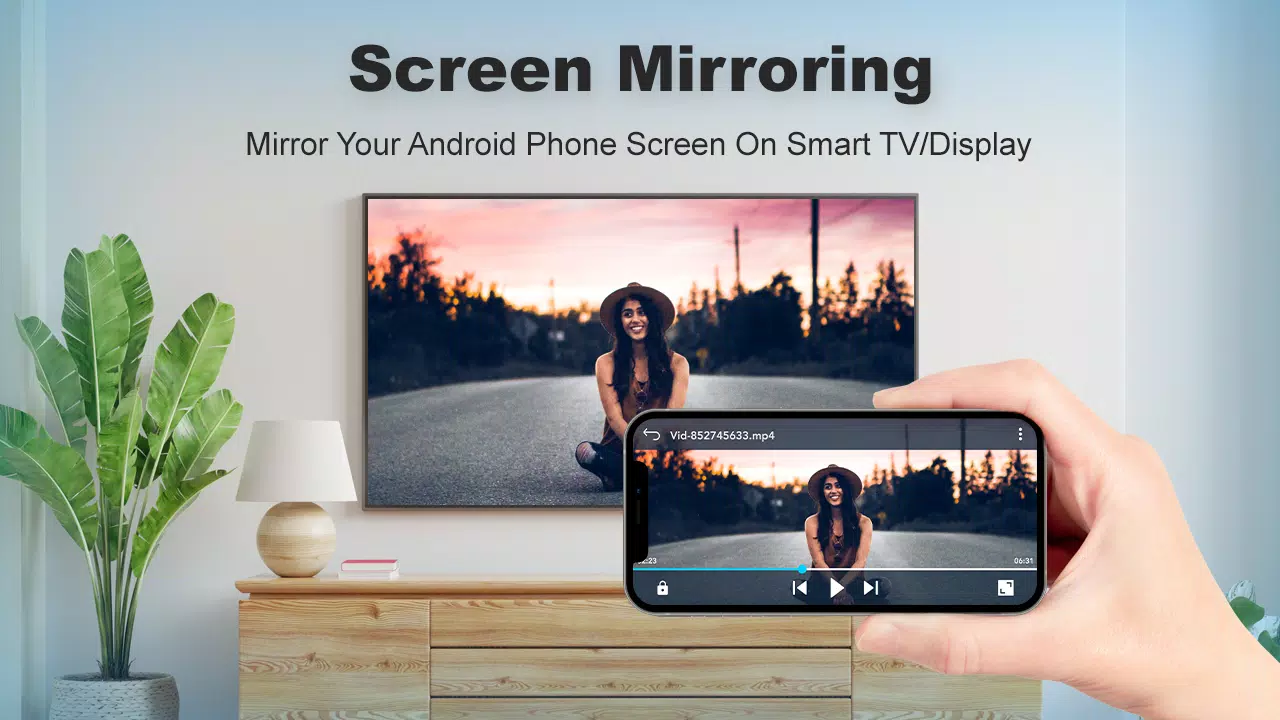Following along with online fitness courses or joining a Zoom session was never intended for your Android phone’s small screen. Instead of straining your eyes to see what’s on your phone’s screen, you can just cast or reflect it to a nearby TV. You’ll need the right equipment to accomplish the work, but you won’t have to worry about straining your neck in the process.
Casting your screen mirror has several uses beyond merely creating a more relaxing viewing environment, such as when you want to play a few rounds of Among Us or display the latest TikTok trend that you can’t get enough of.
What you need to know to cast from your Android device to your TV
An Android device running Android 5.0 or later is required to get started. The first appearance of that version of Android was in 2014, thus it’s likely that your phone or tablet is running a more recent version of Android. Simply navigate to the Settings menu > About phone > Android version to find out.
You will also require a Google Chromecast streaming device, such as the newly announced Chromecast with Google TV, or a smart display like the Google Nest Hub, in addition to your Android phone or tablet. If you’re not sure whether your TV supports Chromecast, you can check by seeing if it appears as a casting device when you use one of the methods described below.
The Google Home app allows you to mirror your device’s display on a TV.
The Google Home app is the most dependable and consistent method of screen mirroring an Android device. Likely, you already have it installed if you’ve set up a Google smart speaker, Nest Wifi, or Chromecast. If you don’t have it already, you can get it from the Play store.
To begin using a Chromecast device, launch the Home app and choose the device from the list. There should be a Cast my Screen button near the bottom of the screen. If you want to share what’s on your phone’s screen with anyone in the room, you’ll have to accept the prompt that warns you of this. If your device isn’t set up for mirroring properly, you may get a second notice informing you of this. No problems have arisen when encountered the warning and tried to transmit my screen. Tap the Home app’s Stop mirroring button to immediately stop transmitting your screen.
Depending on the capabilities of your mobile device, there may be a simpler solution.
Even while casting from the Home app doesn’t take much effort, you can make things even simpler by using the Casting shortcut in the fast settings panel. Swiping down from the top of the screen on an Android phone or tablet will bring up a menu of fast settings. If you don’t see Screen cast in your quick settings menu, you might need to hit the pencil icon to rearrange the items there.
Find the screencast option and click it; then select the target device from the drop-down menu. Your phone’s screen won’t appear on the TV until it successfully establishes a connection with the Chromecast-enabled device, which can take a few seconds. Repeat the procedures we just went through to end the casting process.
However, there is a catch: not all phones have a cast button option in the shortcut menu. Whether or not your phone supports shortcuts is unclear; however, you shouldn’t give up hope if it doesn’t. The Home app still supports phone mirroring.
When you mirror your screen, whatever you see on your mobile device will appear on the TV screen as well. That is, the content of all alerts and notifications will be made public. If you want to reduce distractions, Activate the Do Not Disturb. Because of the possible delay when casting from your phone to TV, it’s best to play less action-packed games like Fortnite instead.
Read More: How can you activate Hulu Code on
